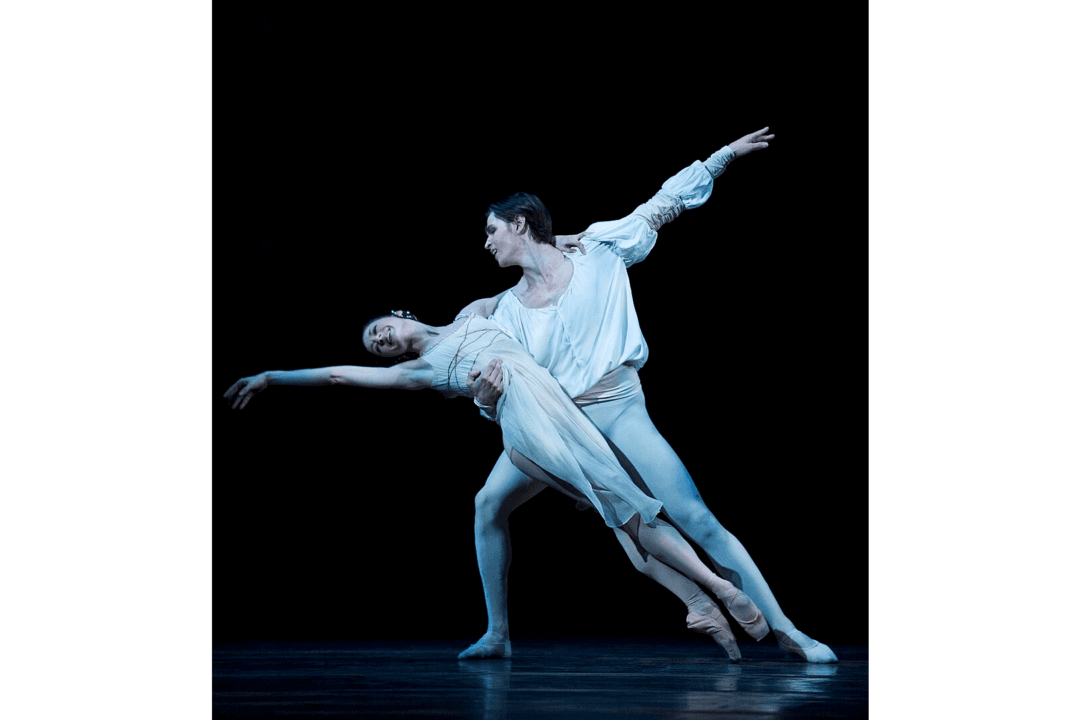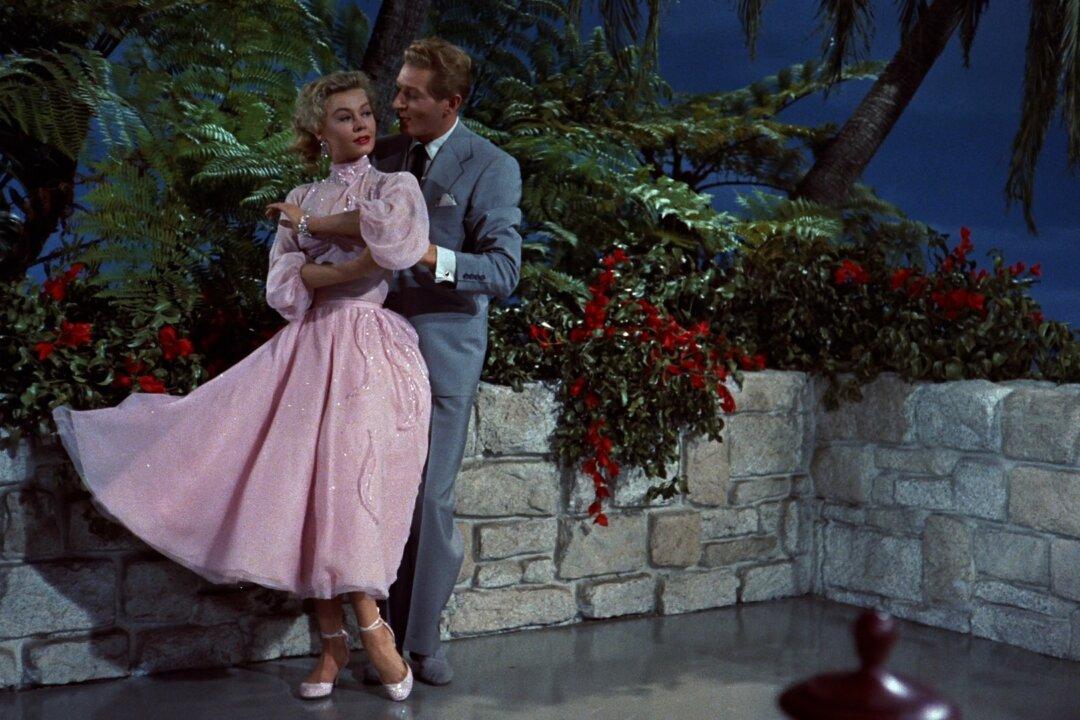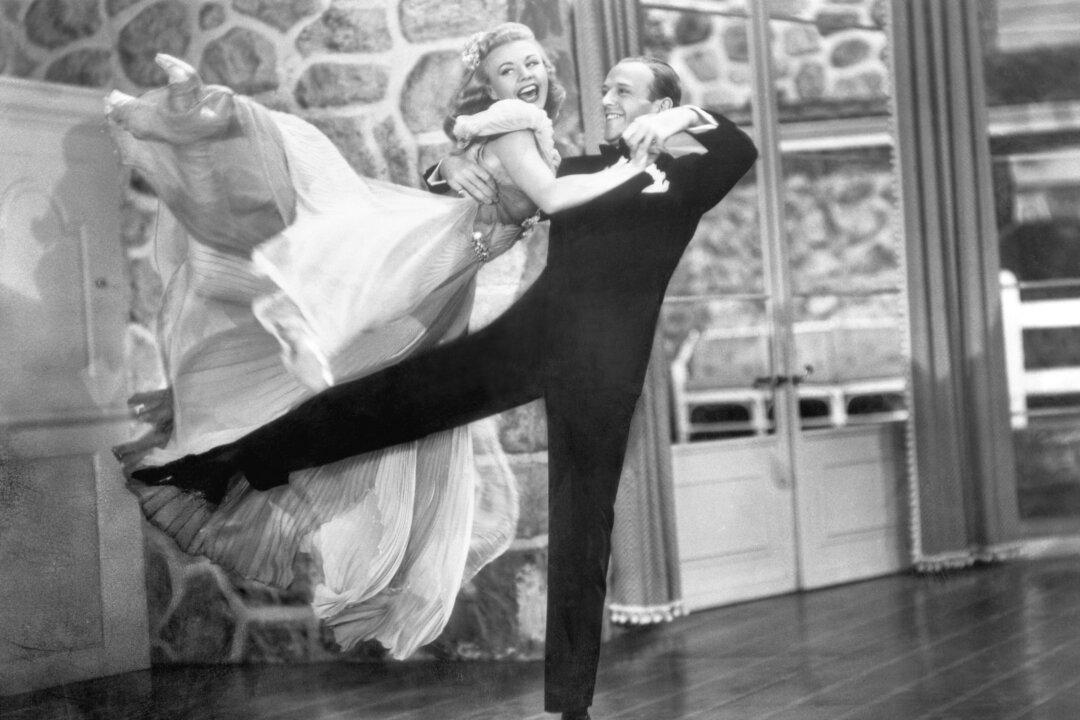When naming famous cowboy actors, Tasmanian-born Errol Flynn, best remembered as a gallant swashbuckler in medieval or Elizabethan England, is hardly the first to come to mind. However, besides his adventures as Robin Hood and his buccaneering as the Sea Hawk, the Warner Bros. star made eight feature film westerns.
‘Dodge City’ (1939)
In 1866, buffalo-hunters Wade Hatton (Flynn), Rusty (Alan Hale), and Tex (Guinn “Big Boy” Williams) have helped Col. Dodge (Henry O’Neill) complete a new stretch of railroad to Dodge City, Kansas. Six years later, Dodge City has grown into a lawless nest of thieves and gunmen, ruled by Hatton’s old nemesis, Jeff Surrett (Bruce Cabot). Hatton returns to the city to guard a herd of cattle and a wagon train, whose passengers include Abbie Irving (Olivia de Havilland) and her troublesome, drunken younger brother, Lee (William Lundigan). When Lee dies in a cattle stampede, Irving blames Hatton.After Hatton stands up to Surrett, concerned citizens ask him to become sheriff. Initially, he declines, but when a shoot-out causes a young boy’s death, he accepts. With the help of newspaperman Joe Clemens (Frank McHugh) and Irving, whose feelings toward Hatton are changing rapidly, he begins laying down gun and gambling laws, stirring up trouble with the Surrett mob.
People have joked that this film contains every western genre cliché in the book, but it deserves credit for starting many of the tropes, as one of several movies which re-popularized westerns that year. Featuring a cowpuncher-turned-sheriff inspired by real historical figure Wyatt Earp, the driving of the golden spike in a railroad track, a plucky pioneer girl turned reporter, a near-lynching, and a final gun battle atop a burning train car, this film has everything you could want out of a good old-fashioned western.

One of the scenes reviewers mention the most is a singing battle between former Union and Confederate soldiers. It’s a fascinating foreshadowing of the famous Nazi-French Resistance musical battle from the later Curtiz-directed “Casablanca.” The “Dodge City” scene leads to the greatest barroom brawl ever put to film; it lasted for a full five minutes and wreaked almost total destruction of a saloon. Footage from this memorable fight was used in westerns for years and is said to have inspired the climax of Mel Brooks’s “Blazing Saddles” (1974).
‘Virginia City’ (1940)
In 1864, Union officer Kerry Bradford (Flynn) and his comrades Moosehead (Hale) and Marblehead (Williams) are attempting to tunnel their way out of a Confederate prison, only to be caught by Commandant Vance Irby (Randolph Scott). Bradford swears to get back at him if he ever has the chance. Later, Irby is visited by his childhood friend Julia Hayne (Miriam Hopkins), who now works at a saloon in Virginia City, Nevada. He admits to her that the Confederacy is floundering due to lack of funds. She presents a desperate scheme to transport $5 million dollars from Southern sympathizers in Virginia City to Confederate president Jefferson Davis, and he agrees to it. Meanwhile, the three Union prisoners set off an explosion, allowing them to escape.On the weight of his own suspicions about Virginia City, Bradford is reassigned to there, undercover. On the stagecoach trip west, he meets and falls for Julia and helps stop a hold-up by notorious bandit Murrell (Humphrey Bogart). In Virginia City, Bradford is shocked to encounter Irby and begins to suspect his reasons for being there. Surrounded by Union soldiers, Irby strikes a deal with Murrell to divert their attention, but Bradford remains an obstacle to the Southerners’ escape. When Irby asks Julia to trap Bradford with his affection for her, she must choose between her loyalty to the South and the man she loves.

This film is truly in four acts, rather than the standard three of screenplay writing. Beginning as a tense Civil War picture with the desperate Union soldiers in Libby Prison, it then takes a turn toward the 1939 classic “Stagecoach” with a journey across the plains during which four strangers meet and two fall in love. Once in Virginia City, it takes on the character of a western, while the conflict between the Confederacy and the Union boils beneath the surface. Its third act is a pioneer tale, as the indefatigable Southerners fight their way across the parched desert. After he makes the brave choice to put his humanity above his military duties, Bradford’s life is saved by a surprising eleventh-hour appearance of a famous historical figure. After struggles, tragedies, and hardships, the film ends on an uplifting note of brotherhood.
Soul Versus Spectacle
From these descriptions, these two films may not sound very similar. While they feature the same trio as prominent characters, they are very different in theme and mood. Amusingly, “Dodge City” ends with Wade’s planning to clean up another lawless town, which happens to be called Virginia City. While this does seem to set up a sequel, the 1940 film was definitely not a continuation, since it takes place years earlier.It can be hard to pick a favorite when comparing two films, as each has its own special qualities and charms. In this case, my personal choice was clear. Both films are excellent examples of a favorite Old Hollywood genre in its early days.
The Technicolor cinematography of “Dodge City” has the signature creamy beauty of an early production by Warner Bros., and its characters are equally warm and vibrant. “Virginia City,” however, was filmed in old-fashioned black and white, focusing less on spectacle and more on the heart and soul of a nation torn apart; it shows how the oneness of mankind should overcome all differences and reunite even a house divided. I invite you to watch both wonderful classic westerns and pick your own favorite.








